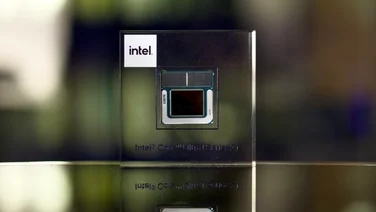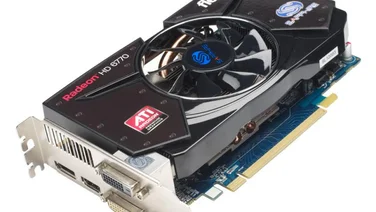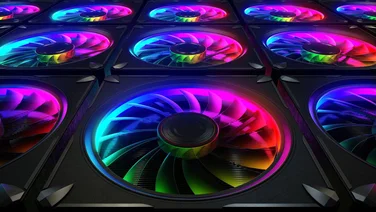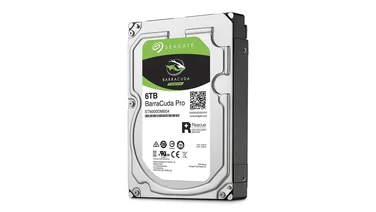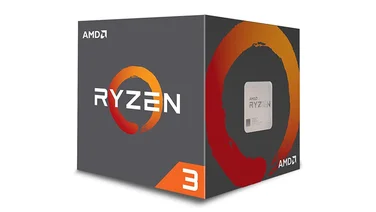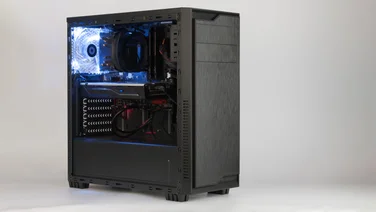To help us provide you with free impartial advice, we may earn a commission if you buy through links on our site. Learn more





- Faster than any mid-range card
- DLSS works wonderfully
- Good industrial design
- DLSS and Ray Tracing not widely supported
- Pricier than recent rivals
To understand the importance of the GeForce RTX 2060, Nvidia’s new mid-range gaming graphics card, it’s worth recalling the success of its predecessor, the Nvidia GeForce GTX 1060. Not just in a commercial sense but in terms of impact. This was an affordable GPU costing around £250 and yet would it sail through games at 1,080p, cope well at 1,440p and even handle certain games at 4K, notwithstanding some settings-tinkering.
As such, the GTX 1060 became the de facto mid-tier GPU among DIY PC builders and international manufacturers. It took AMD three attempts to come up with something that meaningfully outperformed it – the Radeon RX 480, RX 580 and RX 590 – and, in what is either a cruel twist of fate or a case of questionable business planning, the last of these has been released just in time for the RTX 2060 to reset everything once again.
READ NEXT: The best graphics cards to buy today
Nvidia GeForce RTX 2060 review: What you need to know
Like the rest of the RTX 20-series cards, the RTX 2060 is built on Nvidia’s 12nm Turing architecture, which means it can enable the series’ headline features of Ray Tracing and DLSS (Deep Learning Super-Sampling) in games.
The former, in theory, allows for better-looking lighting and shadows by more realistically simulating how light bounces around a scene, while DLSS is the product of Nvidia’s own supercomputer cluster figuring out how to apply anti-aliasing without the usual performance hit.
Both technologies are interesting, but currently sparsely-supported in games you can play right now. Luckily, the RTX 2060 also promises a big boost to core performance. Its 6GB of VRAM (there’s no cheaper 3GB version this time) is of the new GDDR6 variety, with bandwidth reaching 336GB/sec compared to 192GB/sec on the GTX 1060’s GDDR5. And, while peak stock CUDA core clock rates have dropped from 1,708MHz to 1,680MHz, the RTX 2060 has a lot more cores than the GTX 1060: 1,920 versus 1,280.
Nvidia GeForce RTX 2060 review: Price and competition
Despite all this, there is one potential source of anxiety: the price. With the Founders Edition model we’re testing here costing £329 and some partner cards exceeding £350, the Nvidia GeForce RTX 2060 represents a big leap in terms of more than simply specifications.
It’s still a relatively wallet-friendly proposition next to the £460 RTX 2070, the £700-ish RTX 2080 and the £1,100 RTX 2080 Ti. Indeed, this is the cheapest way of adding movie-style Ray Tracing to your PC’s capabilities, by some margin. However, for straightforward 1080p and 1440p gaming, Nvidia’s newest card is clearly undercut by the £250 AMD Radeon RX 590.
While AMD’s GPU is based on what could now be considered last-generation architecture, the RTX 2060 will need to open up a pretty commanding performance lead and show that Turing’s special features aren’t just marketing filler to justify its considerably higher price.





Nvidia GeForce RTX 2060 review: Design
We’ll get to that soon but, first, let’s look at the card itself. Nvidia’s Founders Edition design sticks with the clean, mostly aluminium form and styling of its higher-end RTX Founders Edition models, including dual axial fans and a silvery backplate.
There’s a good mix of outputs, namely one HDMI port, two DisplayPorts, one dual-link DVI-D socket and a USB Type-C VirtualLink port. VirtualLink is an all-in-one standard for delivering both video signal and power to VR headsets. It’s a niche inclusion but one that could be very useful for VR fans, especially those who might need the single HDMI port for their monitor instead.
At 229mm long, the RTX 2060 is slightly shorter than the GTX 1060 Founders Edition, making it easier to fit into smaller cases, a nice nod toward this being a card for (almost) everyone, including those who don’t want or can’t afford a massive chassis. Like the GTX 1060, however, there’s no bridge connector for running two RTX 2060s in an SLI configuration, something that (of the current generation) is only possible with the RTX 2080 and RTX 2080 Ti.
Still, it’s a well-built card on the whole. The twin fans are silent under light loads and never annoying loud under sustained load. We’ve heard brief spurts of coil whine during our testing, but only twice and both during menu screens rather than gameplay.





Core temperatures are kept well under control, too. During multiple repeated cycles of the Tomb Raider benchmark, for example, temperatures tended to hover around the 70°C mark, peaking at 74°c. Funnily enough, these are exactly the same figures as those of the RX 590 model I recently tested: the XFX Radeon RX 590 Fatboy 8GB.
Where Nvidia’s card pulls ahead is efficiency. True, the card does require an eight-pin PSU cable and has a TDP of 160W, so it’s thirstier than the six-pin, 120W GTX 1060 but according to GPU-Z its total power consumption never pushed past that 160W mark, generally staying within the 150W-160W range. That’s a much better showing than the RX 590, which we recorded averaging 180W-190W and peaking as high as 255W.





Nvidia GeForce RTX 2060 review: Performance
Crucially, the RTX 2060 also bests the RX 590 on in-game performance, even without any DLSS trickery. Dirt: Showdown, running at Ultra quality with 4x MSAA enabled, didn’t initially look like a great result for it. The average frame rate was 116fps for the RTX 2060, a mere 1fps higher than the RX 590 and 14fps lower than for the GTX 1060. Rather than Nvidia taking a weird step backwards, however, I think this can be put down to our test PC’s ageing Core i7-4770K bottlenecking the GPU, as Dirt is particularly CPU-reliant.
An increased 116fps score at the increased resolution of 2,560 x 1,440 appeared to confirm the theory. This time, however, it opened up a lead over the GTX 1060 and RX 590, which returned 97fps and 108fps respectively. At 3,840 x 2,160, I saw the biggest improvement, with the RTX 2060 averaging a smooth 86fps – 32fps more than the GTX 1060, and 19fps more than the RX 590.

Testing with Metro: Last Light Redux saw another win for the RTX 2060, with the card notching 79fps at 1080p; the only card of the three to breach 60fps in the process. It hit 46fps at 1440p, too, and all with Very High settings, SSAA turned on and every other graphical feature (such as tessellation) enabled.
The only resolution that proved too much for the RTX 2060 was 4K, with the card limping to an average of 20fps. That’s still better than the 12fps produced by both the GTX 1060 and RX 590 in this test. Getting a playable framerate is easy, too. Simply disabling SSAA, which isn’t very helpful at such a high resolution anyway, and dropping to High quality saw the frame rate jump to 58fps.

Tomb Raider, which is both less intensive than Metro and better at scaling with hardware than Dirt: Showdown, saw perhaps the RTX 2060’s finest hour. With Ultimate quality and FXAA enabled, the card achieved a silky 170fps, an enormous jump up from the RX 590’s 116fps and the GTX 1060’s 102fps. There were smaller gains at higher resolutions, too: 105fps at 1,440p and 52fps at 4K are 26fps and 13fps higher than the RX 590, respectively.

The RX 2060 is also the first non-high-end card we’ve seen land a perfect score of 11 in the SteamVR Performance Test, following in the footsteps of the GTX 1070 Ti, GTX 1080, GTX 1080 Ti and all other RTX graphics cards. The RX 590, conversely, only managed 8.1 indicating that VR games will run noticeably better on the RTX 2060.
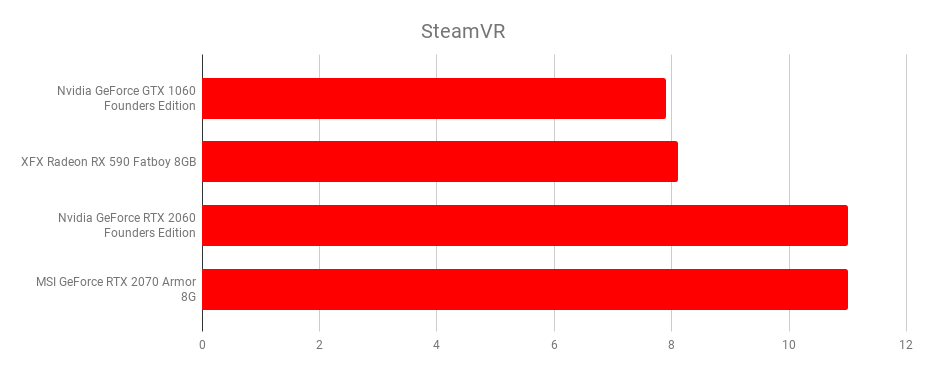
Speaking of premium cards, the RTX 2060’s benchmark results aren’t just superior to rival mid-rangers. They also place it ahead of, albeit slightly, the GTX 1070, and roughly level with the GTX 1070 Ti. These both cost significantly more than the RTX 2060 at launch, especially the £480 GTX 1070 Ti. On pure performance terms, then, the Nvidia GeForce RTX 2060 is pretty decent value.
Of course, there are a couple more tricks the RTX 2060 has up its sleeve. The first is DLSS and, while it’s not as headline-grabbing as the shiny lights of Ray Tracing, it is the technology we think will make a more positive difference to a greater number of players.
Sadly, only one of the 25 planned DLSS-capable games – Final Fantasy XV – is both currently available and has a working DLSS implementation. It’s also very limited in that it only works with the resolution set to 3,840 x 2,160. Still, from what we’ve seen in XV’s benchmark tool, DLSS has enormous potential: with conventional temporal anti-aliasing (TAA) enabled, the RTX 2060 emerged with a score of 3,789, denoting “Standard” performance but after switching to DLSS this increased to 4,886, which is a “Fairly High” result.





That’s a 29% improvement at the click of a button, with no compromise on the smoothness of edges. Some users have reported issues like texture shimmering when using DLSS, which is a likely effect of how it uses AI-sourced approximations of some frames to reduce load. To my eyes, however, there wasn’t a clearly visible difference between TAA and DLSS, at least beside the smoother performance. As long as more games add or launch with support, particularly for lower resolutions, I can easily see DLSS offering the best balance between effective edge-smoothing and unshackled performance.
Ray Tracing, on the other hand, feels like Nvidia’s ambition colliding a bit too awkwardly with what the RTX 2060 can actually achieve. That’s not to say it’s a waste of time. In Battlefield V, which is currently the only game to fully support the technology – the woodland shootouts of the Tirailleur campaign were visibly prettier with RTX enabled. Without it, shadows seemed flatter, and well-lit areas not quite as well-lit.
The problem is that it also cuts performance by almost half, dropping from 100fps to about 55fps with (at 1080p and with TAA and Ultra quality enabled). That’s still playable and performance could improve as developers become more familiar with and more capable of optimising the technology. For now, though, RTX 2060 owners can expect to pay a big frames-per-second price for those nicer-looking effects.
Nvidia GeForce RTX 2060 review: Verdict
Even if Ray Tracing needs work, however, the RTX 2060 is more than enough graphics card to be worth an elevated £329. Core performance alone ensures it’s a superb card at 1080p and 1440p and, with the addition of DLSS, it makes the RX 590 look like the oldest of old hat, scant weeks after the AMD GPU’s launch.
In fairness, any excitement over the RTX 2060 should be tempered with a certain wariness about where Nvidia is going with its 20-series cards. Bumping up prices isn’t ruinous if each model can both outclass the competition and bring support for exciting new feature. However, the only 10-series cards that are due replacements – the GTX 1030, 1050 and 1050 Ti – are all firmly budget options.
As much as I like the RTX 2060, it’s hard to see something like Ray Tracing working on cards with such modest performance to start with and raising the prices of such cards will defeat the point.
Still, that’s then (potentially) and the RTX 2060 is now. It’s far more powerful and far more efficient than the AMD Radeon RX 590, so even if DLSS and Ray Tracing support is yet to become widespread, it’s a good buy for anyone upgrading from a budget card or building a new rig from scratch. A worthy successor the GTX 1060, indeed.



